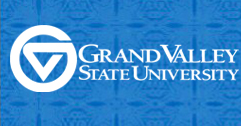Searching for Temporal Patterns in the Time-Series Micoarray Data
Location
Exhibition Hall, DeVos Center
Description
PURPOSE: Advances in microarray technology have led to highly complex datasets often addressing similar or related biological questions. Molecular biological research is often based on measurements that have been obtained at different points in time. The biologist looks at these values not as individual points, but as a progression over time. Our program (SPOT) helps the researcher find these patterns in large sets of microarray data. PROCEDURES: A researcher proceeds through three subsequent steps: first, selection of microarray data of interesting experiments from a public functional genomics data repository, NCBI GEO, second, translating the temporal measurements into time intervals, and third, defining temporal concepts like “peaks” based on those intervals. Then he/she can search for genes that exhibit that particular pattern within the previously selected data pool. Knowledge-based temporal abstraction was used to analyze the microarray time series. OUTCOME: NCBI GEO is a public database for microarray, next-generation sequencing, and other forms of high-throughput functional genomic data submitted by the scientific community for gene expression analysis. We created a software tool using open-source platforms that supports the R statistical package, PHP, Bioconductor, and Web 2.0 knowledge representation standards using the open source Semantic Web tool Protégé-OWL. The poster focuses on the web interface that connects to these different programs. It was thoroughly tested using test cases from NCBI GEO. IMPACT: Analysis of temporal gene expression data using microarrays presents a novel opportunity to identify new drug targets and is one potential step to evaluate drugs for their overall effects.
Searching for Temporal Patterns in the Time-Series Micoarray Data
Exhibition Hall, DeVos Center
PURPOSE: Advances in microarray technology have led to highly complex datasets often addressing similar or related biological questions. Molecular biological research is often based on measurements that have been obtained at different points in time. The biologist looks at these values not as individual points, but as a progression over time. Our program (SPOT) helps the researcher find these patterns in large sets of microarray data. PROCEDURES: A researcher proceeds through three subsequent steps: first, selection of microarray data of interesting experiments from a public functional genomics data repository, NCBI GEO, second, translating the temporal measurements into time intervals, and third, defining temporal concepts like “peaks” based on those intervals. Then he/she can search for genes that exhibit that particular pattern within the previously selected data pool. Knowledge-based temporal abstraction was used to analyze the microarray time series. OUTCOME: NCBI GEO is a public database for microarray, next-generation sequencing, and other forms of high-throughput functional genomic data submitted by the scientific community for gene expression analysis. We created a software tool using open-source platforms that supports the R statistical package, PHP, Bioconductor, and Web 2.0 knowledge representation standards using the open source Semantic Web tool Protégé-OWL. The poster focuses on the web interface that connects to these different programs. It was thoroughly tested using test cases from NCBI GEO. IMPACT: Analysis of temporal gene expression data using microarrays presents a novel opportunity to identify new drug targets and is one potential step to evaluate drugs for their overall effects.

